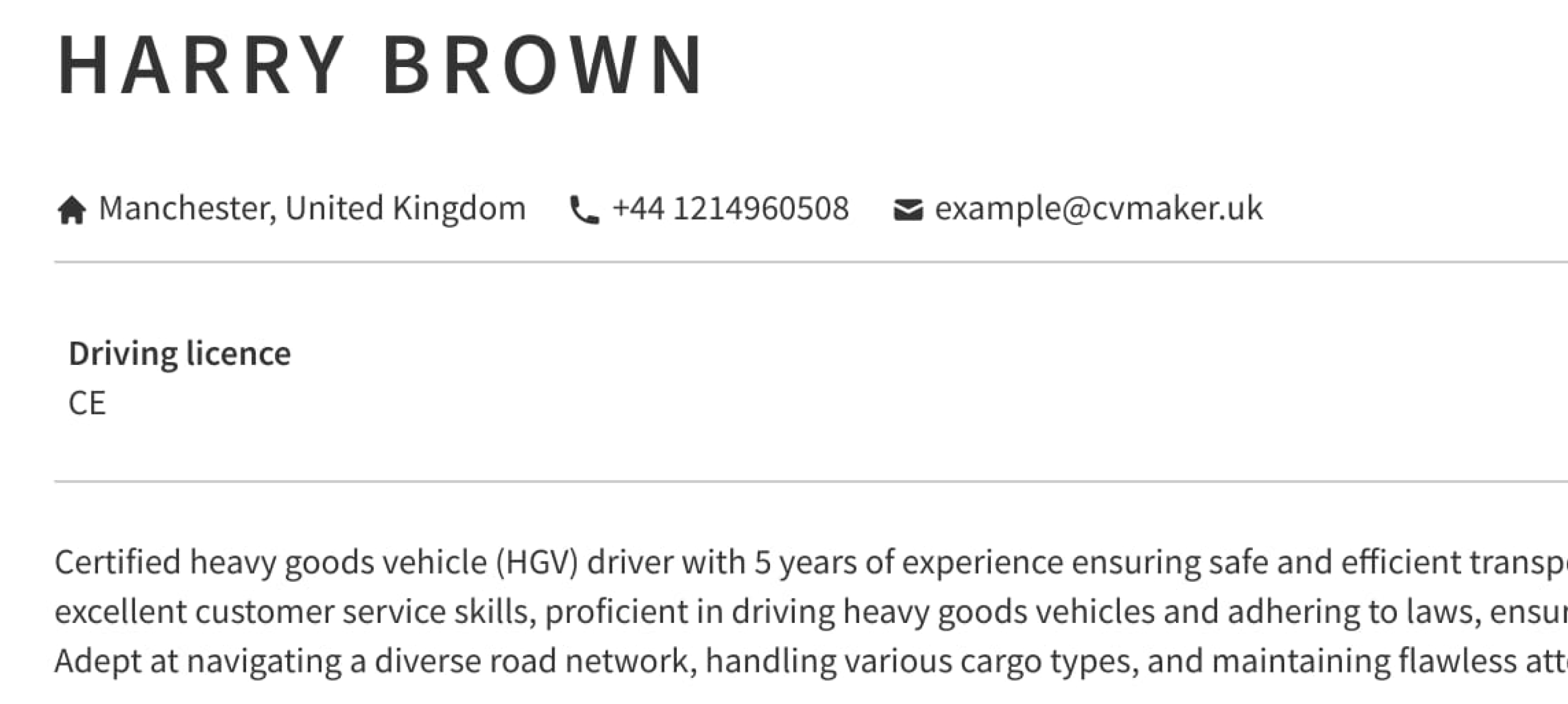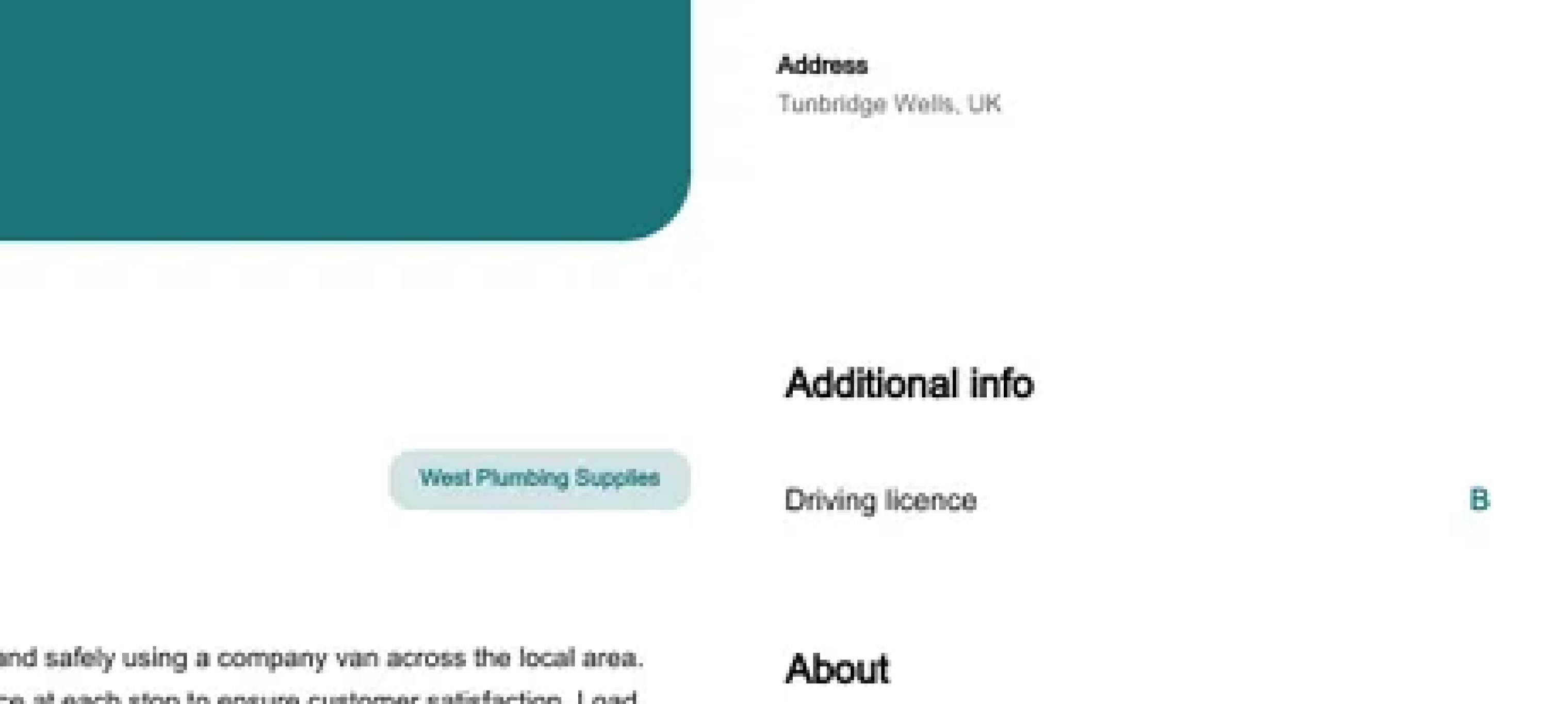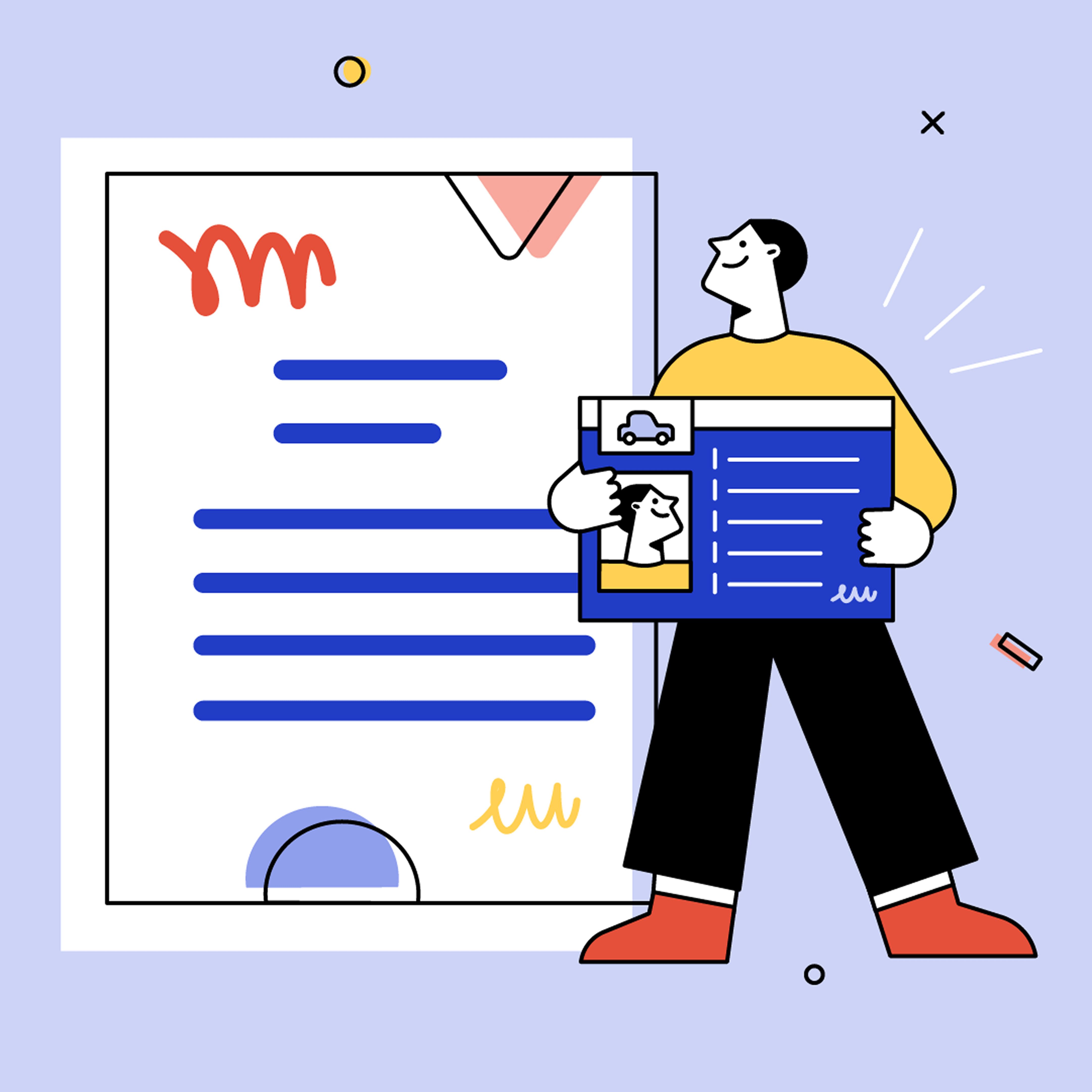Ever wondered if adding your driving licence to your CV actually helps you get interviews? For many UK roles, it can. This small detail signals you can travel, work shifts, or operate specific types of vehicles. Used well, it can strengthen your application and speed up screening.
In this guide, you’ll learn:
when it matters,
how to format it,
role-specific examples,
and the common don’ts to avoid.
Easily add your driving licence to your CV
Why your driving licence can matter on a CV
Not every job needs a licence. But for many UK roles, it’s a differentiator that can move you up the shortlist. Here are some reasons why it might be beneficial to add your driving licence information in the personal details CV section.
Employer requirements: Some roles state “full UK driving licence essential/preferred” in the job description. If the role requires it, licence on your CV helps you pass the first screen.
Practicality: Field-based jobs, client visits, facilities and site work, or shift patterns that fall outside public transport hours often expect you to drive.
Compliance: Certain licence categories (for example, Category C for HGV/Class 2, D1 for minibus) are legal requirements. If you have them, show them.
ATS and recruiter scans: Many applicant tracking systems search for “full UK driving licence,” “Category C,” or “CPC.” Include exact phrasing to get picked up.
Learn more about how to make an ATS-friendly CV.

Key sectors where it matters
When roles involve multi-site work, early starts/late finishes, or time-critical visits, reliable transport, often a full driving licence and access to a vehicle, can make or break performance. These are the sectors most affected:
Sales and field marketing: Client visits and regional travel.
Construction and engineering: Site access, tool transport, and early starts.
Care and support work: Home visits across a patch with limited buses.
Facilities and maintenance: Multi-site work orders in one day.
Logistics and delivery: Delivery driver roles with defined licence category and CPC.
Hospitality management: Travel between venues and late finishes.
Professional services with on-site audits: Consultancy, property surveys.
Urban vs rural
Transport needs shift dramatically by location. In cities, frequent public transport and shorter distances can reduce reliance on a car, though congestion, parking, and late-night gaps still affect shift work. In rural or semi-rural areas, sparse routes and longer journeys often make a full driving licence and access to a vehicle essential.
London: Good public transport coverage, but licences still help for field sales, care, and facilities.
Regional and rural roles: Limited public transport makes driving essential, especially for early/late shifts.
Early-career advantage
For graduates or school leavers, a full licence shows you’re mobile and flexible. If you’re aiming at a driving role, field sales, or site-based work, it’s a plus.
Job types and why a licence helps
Knowing the “why” sets up the “when,” so you only include it when it adds value.
| Job | How it helps |
|---|---|
| Field sales | Multiple client calls per day. |
| Care worker | Home visits on tight schedules. |
| Facilities technician | Reactive jobs across a region. |
| Construction trainee | Early starts and supply runs. |
| Delivery driver | Compliance with licence category and clean driving record. |
| Hospitality supervisor | Travel between sites, late finishes. |
When it’s relevant to include your driving licence
Use your licence strategically. Link it to the job you’re applying for and the realities of the role.
Always include if:
The job ad mentions “driving,” “licence,” “own car,” “business insurance,” or specific categories (e.g., C1, C, D1).
You’ll visit multiple sites or clients in a week.
Shift patterns make public transport impractical (overnights, split shifts).
You’re applying for a driving job such as delivery driver, taxi driver, courier, or HGV driver.
Sometimes include if:
The role is hybrid with occasional travel (meetings, training days).
You live in a rural area and want to show you can commute reliably.
You hold extra categories that may help (for example, C1 for heavier vans in facilities or events).
Usually skip if:
The role is fully remote with no travel or the licence doesn’t add value compared to your core skills.
Reading job ads: spotting licence keywords quickly
Scan for:
How to present your driving licence on a CV (UK standards)
Keep it short, accurate, and easy to find. Use exact keywords from the ad: “full UK driving licence,” “Category C,” “CPC. Avoid alternate spellings (e.g., “driver’s licence”) if the ad uses “driving licence.” Place it high on the page or under a clear heading so both humans and ATS pick it up.
Where to place it
Best: Contact/Personal details section at the top third of your CV.
Alternative: A short “Additional information” or “Certifications” section near the end.

Honesty first
If a job asks you to declare points, be clear: “3 points (SP30, 2023).” Explain context briefly in a cover letter if needed, and focus on your safe driving record since.
What to include
Licence type and status: “Full UK driving licence.”
Categories if relevant: “Category B,” “C1,” “C,” “D1,” plus CPC and Digital Tachograph where required.
Vehicle access: Only if relevant. “Full UK licence; access to vehicle.”
Points/endorsements: Mention only if asked in the job ad or if eligibility depends on it.
Business insurance: Add if the role requires travel to client sites. “Business insurance (Class 1).”
How to format it
Keep it to one line where possible and use consistent phrasing across applications to match ATS searches. Do not include icons or images.

Examples by role type
| Role type | Details to include |
|---|---|
| General office | “Full UK driving licence.” |
| Care worker | “Full UK driving licence; access to vehicle.” |
| Field sales | “Full UK driving licence; business insurance (Class 1).” |
| Logistics | “Category C (Class 2); CPC; Digital Tachograph; clean driving record.” |
| Facilities/maintenance | “Full UK licence; comfortable with regional travel.” |
| Taxi driver (private hire) | “Full UK driving licence; Private Hire Licence (Local Authority); excellent customer service.” |
| Delivery driver | “Category B; multi-drop experience; clean driving record.” |
Data protection: what not to include
No licence number, NI number, or scans of your licence. Keep personal details lean: name, location, phone, email, and LinkedIn if relevant.
Role-specific guidance and examples
Use these to tailor your CV to the job you’re applying for.
Driving job and delivery driver roles
What to include: Licence category, clean driving record, CPC/tacho (if needed), types of vehicles handled, routes (urban/multi-drop/long-haul), and relevant customer service.
Example line in personal details: “Category C (Class 2) with CPC and Digital Tachograph; clean driving record.”
Skills section: “Route planning, multi-drop efficiency, safe loading, customer service at delivery, handheld device use.”
Experience: “Operated 18T rigid vehicles; 70+ drops/week; 98% on-time rate.”
Use the following CV examples to help boost your job search success:
Taxi driver and private hire
What to include: Full UK licence, Private Hire Licence (local authority), area knowledge, customer service, cash handling, safeguarding awareness if applicable.
Skills section: “Passenger care, local route knowledge, app-based dispatch, complaint resolution.”
Note any languages that aid customer service.
Care, facilities, construction, and engineering
What to include: Full UK driving licence; access to a vehicle; willingness to travel regionally; licence category if you drive larger vans (C1).
Experience: “Visited 6–8 client sites daily across Kent; maintained response SLAs.”
Use the following CV examples to help elevate your job search:
Sales and account management
What to include: Full UK driving licence; business insurance (Class 1) if required.
Experience: “Field sales covering North West; 10–12 client visits/week.”
Looking for CV examples? Check out the following:
Create a professional CV
Common mistakes to avoid
Being vague: Writing “Driving licence” without “Full UK” or the licence category.
Oversharing: Never include your NI number, licence number, address history, or scans/photos.
Irrelevant categories: Listing motorcycle (A) or bus (D) when the role is an office job.
Outdated info: Stating “clean licence” when you have active points.
Inconsistent terms: Switching between UK/US spelling or mixing licence category terms.
Hiding critical licences: Burying CPC or Digital Tachograph in a dense paragraph.
Assuming: Not adding your licence when the role clearly requires it.
How to weave it into your CV
Personal details: Add the licence line in the top section so potential employers see it fast.
Personal summary: One sentence can help. “Field-based engineer with a full UK driving licence and flexible regional travel.”
Skills section: If the role requires driving, add related skills like route planning, safe loading, or drop-offs.
Experience: Show driving experience with outcomes: on-time delivery rates or accident-free mileage.
Learn more about how to write a good CV.
Essentials for listing a driving licence in a CV
Including your driving licence can be an advantage when the job needs travel, on-site work, or a specific licence category. Place it where it’s easy to see, use clear wording, and tailor it to the role. This simple line can improve ATS results and speed up screening. Take five minutes to review your CV. Add or refine your licence details to match your target roles, then run it through an ATS-friendly CV builder or ask for expert feedback.
Next steps?
Browse our CV examples to present your unique strengths and suitability to employers. Streamline your job application and learn how to send your CV via email, include references and prepare for a job interview to succeed. Explore the average salary in the UK to prepare for your career move.
FAQs
Should I include a provisional?
Yes, if the driving role trains new drivers or the employer notes progression. Write “Provisional UK driving licence.”
Do I need to list points?
Only if the employer asks or it affects eligibility. Otherwise, be ready to disclose later.
What if I’m learning?
“Learning to drive; test booked Oct 2025.” Use this only if the role requires near-term driving.
Is an international licence okay?
Clarify: “Full EU licence (eligible to drive in the UK).” If exchange needed, note your plan.
How do I tailor my CV?
Mirror the job ad terms in your personal statement and skills section. If the role requires a category, name it exactly.
)



)

)